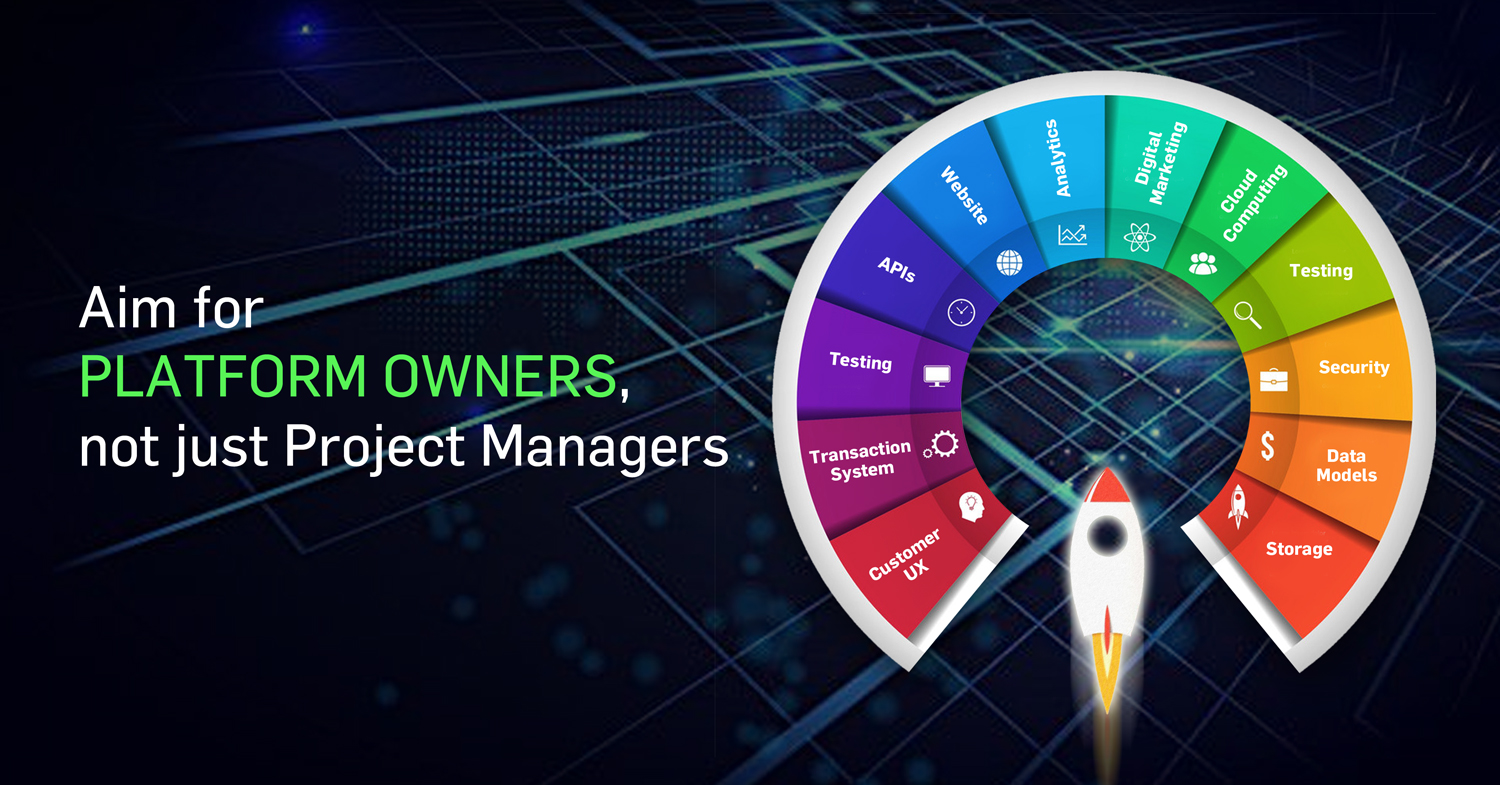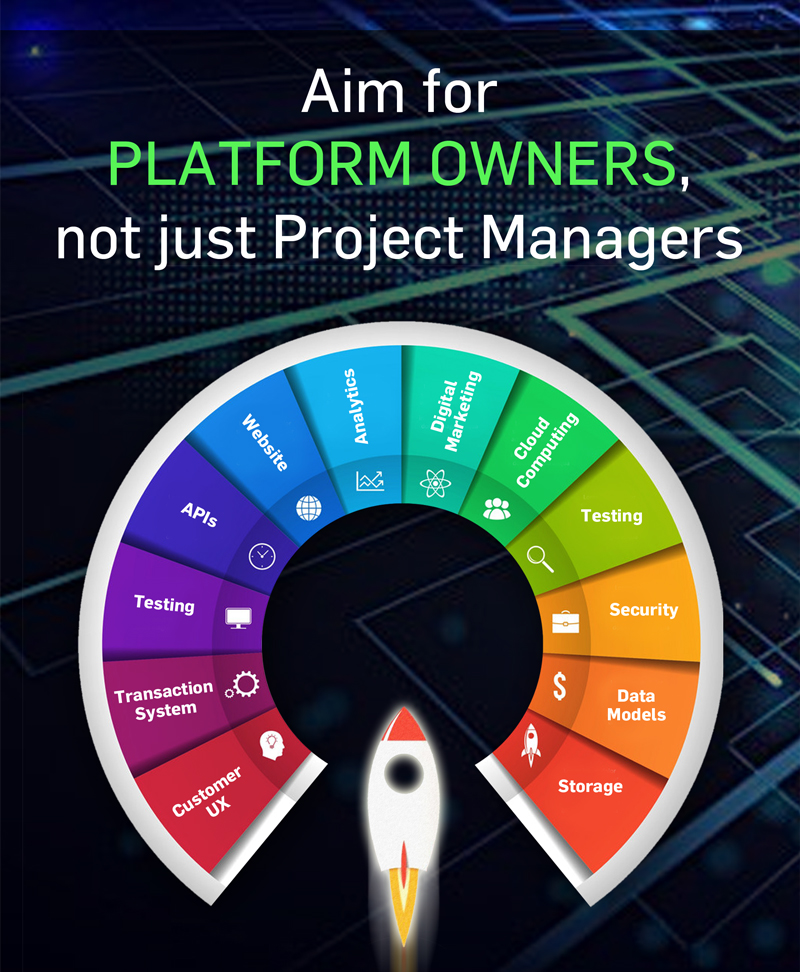



Digital transformation-at-speed requires a new way to overcome organizational siloes
It is often said that digital transformation within the financial sector is all about overcoming siloes. But not just data or technology siloes (of which there are many!). According to a recent McKinsey report, 70% of large scale digital transformation programs fail due primarily to organisational siloes, ie teams not pulling together in the same direction or at the same speed.
Functional siloes between business and IT teams are particularly intractable. Misaligned leadership and KPIs, communication gaps and conflicting work cultures often cause digital launches to be delayed by many months, and for larger projects, by many years. Faced with this, some company execs have put in place digital teams and project managers to act as intermediaries between IT and business.
However, in the post-Covid world that has forced digital transformation into overdrive, this bridging process may be a time-consuming luxury that companies cannot afford. Instead, consultants like McKinsey suggest the establishment of “modular” platforms, that in this context is not to be confused with an enterprise’s IT infrastructure.
Rather, such platforms are mini-factories that offer full scale solutions aimed at furthering an enterprise’s digital agenda. They are run by “Platform Owners” who take end-to-end responsibility for operating the platform as a service.
Take for example the benefits of a cloud computing “platform” designed to accelerate enterprise-wide cloud adoption. In many financial enterprises, such adoption has been relatively slow, often attributed to security concerns. The reality is that many senior execs have just not adequately assessed the Cloud’s business potential, and the job of justifying its value is largely left to IT.
Similarly, business application development remains a largely project-by-project initiative driven by IT. McKinsey suggests that a ready-to-use API services platform would help automate the delivery of business applications. Such a platform would offer an enterprise-wide, cross-functional service that straddles business and IT.
Platform Owners need autonomy
So what exactly are the roles and responsibilities of a Platform Owner (PO)? Here are 5 key areas of autonomy that distinguishes a PO from a Digital Manager.
1. Journey Oversight
POs are responsible for the entire customer or employee journey that their solution will enable. This includes the journey features, tech stack, analytics and user experience. It means POs will lead multi-disciplinary teams combining a variety of functions, business domains and and IT specialisms.
2. Solution Oversight
POs are required to have a clear vision of the solution they want to enable and the strategic decisions needed to achieve it. This includes stakeholder management, effort prioritization, and accountability for the platform’s performance and uptake. They are not short-term project managers nor are they IT and Business go-betweens.
3. Data Oversight
Data assets often stand at the intersection of business and IT, and are therefore the source of much haggling and confusion. The rise of big data and AI has not improved the situation, and in fact may have added to the confusion. Within the new paradigm, data and data access becomes its own platform run by a PO, and is no longer the exclusive prerogative of either IT or business.
4. Operational Oversight
Platforms should be designed to be used standalone or by slotting together within a digital ecosystem. Users can then pick and choose platforms (similar to apps on an app store) based on their respective needs. As such, POs have the responsibility to reduce friction across platforms, maintain platform governance, and define user guidelines.
5. Innovation Oversight
Ultimately, platforms are a way of distributing the task of digital innovation. However, unlike digital managers, POs take charge of both the cost and revenue drivers of such innovation. They can decide what and how much resources are needed to deliver the innovation that their solution requires.
This paradigm of modular platforms and POs is not a prescription for how digital and IT teams should be organized. Approaches involving greater centralization or decentralization (or a hybrid of both) can work equally well.
What it is seeking to re-imagine is the way in which the traditional barriers between business and IT teams are completely dismantled. It is the only practical way to enable digital transformation at the pace that a post-Covid era now demands.
